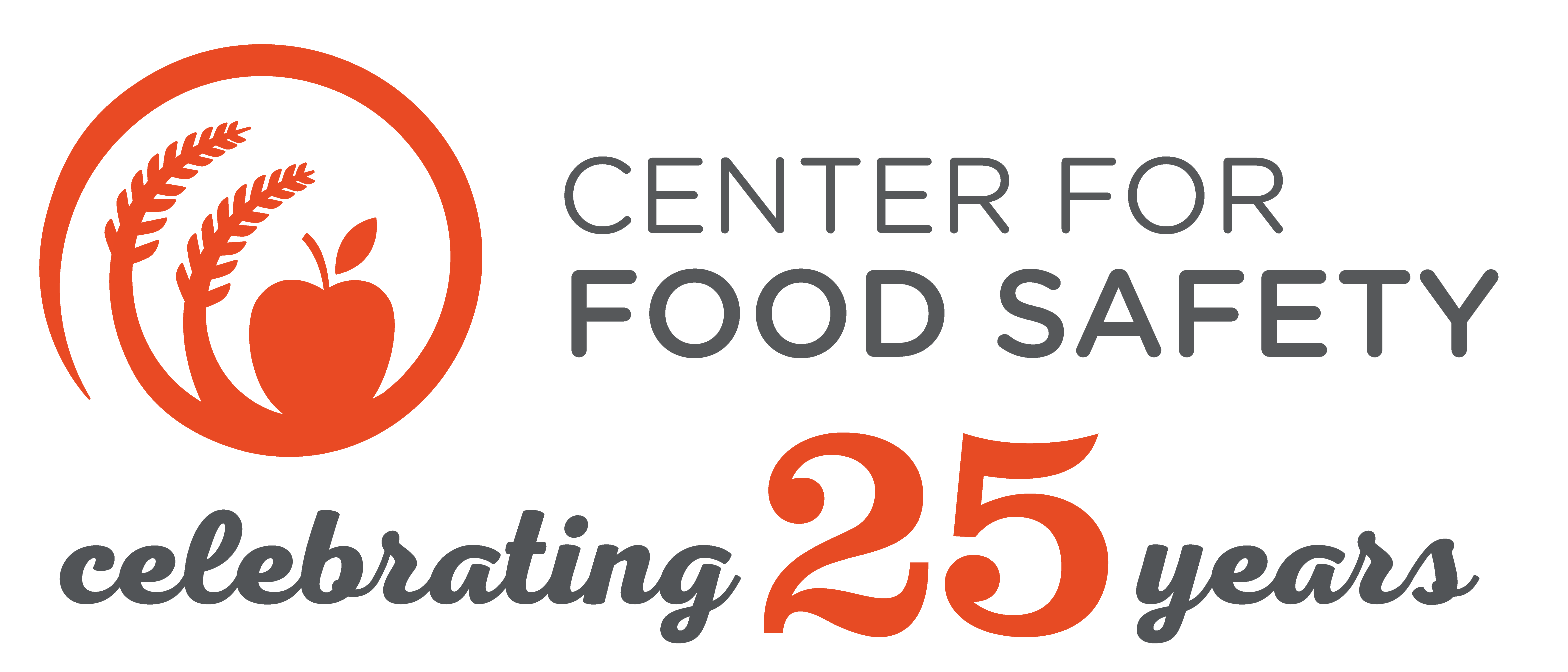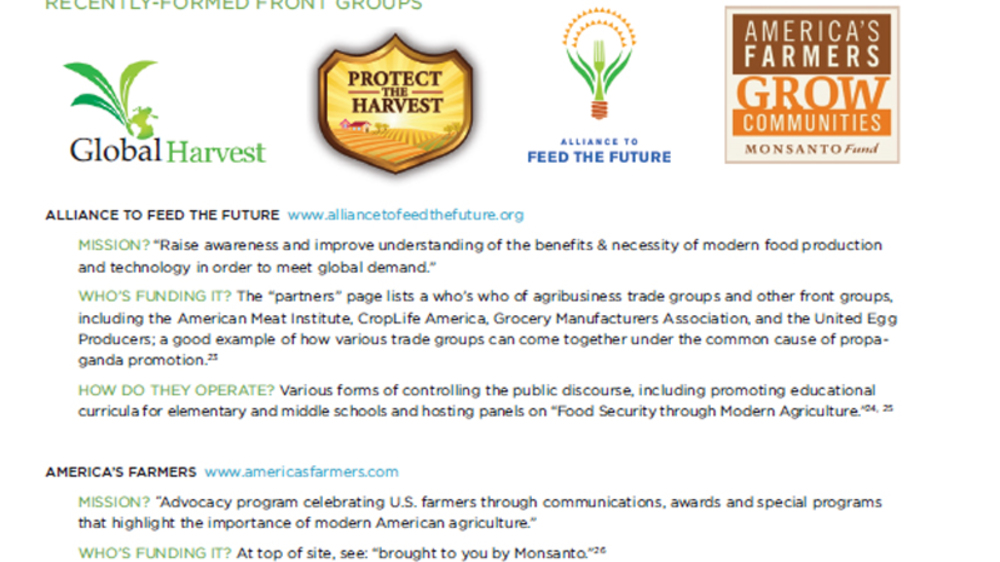Last month, the International Food Information Council Foundation released the third edition of its report: Food Biotechnology: A Communicator’s Guide to Improving Understanding. What sounds like a reasonable and helpful document is in fact the product of a well-oiled PR machine whose board of trustees includes executives from such food giants such as Coca-Cola, Kraft Foods, and Mars.
In response to such tactics, I have authored a new report for Center for Food Safety that exposes the well-funded organizations and highly-sophisticated public relations strategies increasingly deployed to defend the food industry.
Best Public Relations Money Can Buy: A Guide to Food Industry Front Groups describes how Big Food and Big Ag hide behind friendly-sounding organizations such as: the U.S. Farmers and Ranchers Alliance, the Center for Consumer Freedom, and the Alliance to Feed the Future. The idea is to fool the media, policymakers, and general public into trusting these sources, despite their corporate-funded PR agenda.
With growing concern over the negative impacts of our highly industrialized and overly-processed food system, the food industry has a serious public relations problem on its hands. Instead of cleaning up its act, corporate lobbyists are trying to control the public discourse. As a result, industry spin is becoming more prevalent and aggressive.
For example, the same group cited above – the International Food Information Council – in addition to publishing industry-friendly reports, also infiltrates professional conferences such as the annual meeting of the Academy of Nutrition and Dietetics, the nation’s trade association for registered dieticians.
In 2011, IFIC moderated a panel at this event called, “How Risky is Our Food? Clarifying the Controversies of Chemical Risks” in which the take-away message was not to worry about pesticides, and anybody who tells you otherwise is scaremongering and non-scientifically valid. At the 2012 conference last fall, IFIC was back again, with representatives on four separate panels, including dispelling any concerns about food additives.
In addition to IFIC, other front groups that have been around for some time include the notorious industry attack dog, Center for Consumer Freedom, which began in the 1990s with funding from tobacco giant Philip Morris.
In the recent controversy in New York City over limiting the size of sugary beverages, CCF took out full-page ads in major newspapers showing Mayor Michael Bloomberg dressed as a woman with the tagline, “New Yorkers need a Mayor, not a Nanny.” Name-calling and scaremongering are very effective tactics for distracting away from the issue at hand: a serious public health problem.
Big Soda also invented an entirely new front group to do its bidding called “New Yorkers for Beverage Choices,” which pretended to represent individuals, but in fact was funded by the American Beverage Association, the Washington DC-based lobbying arm of the soft drink industry. It’s a brilliant strategy when you realize that creating a group named “Coke and Pepsi Opposing Public Health in New York” just wouldn’t fly.
By relying on a front group such as the Center for Consumer Freedom to do its dirty work, well-known companies like Coca-Cola and PepsiCo are able to keep their noses clean, and their valuable brand reputations intact.
This report is extremely timely because now more than ever new front groups are forming so quickly that it can be hard to keep up. And with deliberately confusing names such as Alliance to Feed the Future, Center for Food Integrity, and Global Harvest, it can be challenging to tell the good guys from the bad. I often have to remind people not to confuse the industry front group Center for Food Integrity with either the Center for Food Safety or the Food Integrity Campaign. Front groups position themselves cleverly to try and confuse media outlets, which too often just assume the information is coming from a reliable source.
The new report answers such questions as, “What is the Different Between Trade Groups and Front Groups?” (mostly that trade groups lobby, while front groups rely more on PR), “What are Common Front Group Tactics?” (scaremongering and buying science, for example) and “How Can We Fight Front Groups?” Most importantly, the report contains numerous examples of front groups, including recently-formed groups created in response to heightened criticism and awareness, along with scientific “institutes” invented by such food giants such as Coca-Coca, Nestlé, and General Mills.
Junk food companies, the biotech industry, and big agribusiness are all on the defense because the nation is waking up to the myriad problems our industrialized food system has created, from public health epidemics, to environmental disasters, to horrific exploitation of humans and animals alike. It’s a testament to the food movement’s success that industry is responding with such sophisticated and well-funded public relations efforts.
But we can’t allow these disingenuous and deceptive tactics to undermine our good work. It’s imperative that reporters, policymakers, and the general public do their homework to learn exactly who is behind these industry front groups and not fall for their biased propaganda and public relations stunts. You can start by reading and sharing this report, which you can download HERE.




